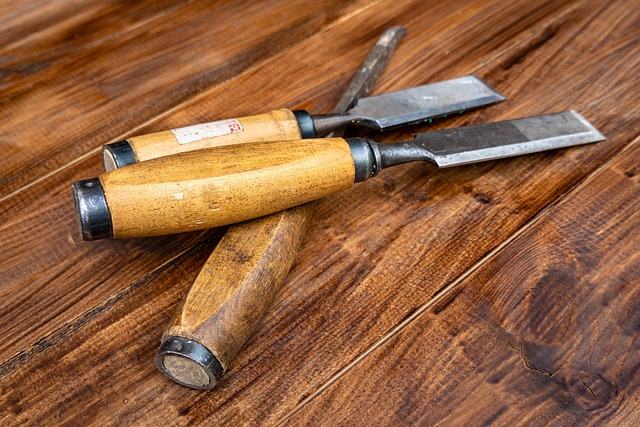In sheet metal and fabrication detailing, fasteners (bolts, screws), rivets, and hardware are indispensable for creating robust assemblies with structural integrity and durability. These components ensure precise alignment, distribute load effectively, and offer permanent fastening solutions, catering to diverse design requirements. Key considerations include load capacity, material type, aesthetics, stress points, and assembly methods, necessitating strategic planning and precision engineering for optimal sheet metal and fabrication detailing.
In the world of sheet metal fabrication, the seamless integration of fasteners, rivets, and hardware is paramount for achieving structural integrity and meticulous component retention. This comprehensive guide delves into the intricacies of these essential elements, catering to both professionals and enthusiasts in the field. We explore defining characteristics, diverse applications, and design considerations for fastener placement, ensuring optimal performance.
From riveting techniques to bolting methods, we demystify each approach, highlighting advantages, limitations, and suitable scenarios. Additionally, best practices for efficient assembly processes and quality control measures are showcased, emphasizing the art of fabrication detailing in sheet metal projects.
Understanding Fasteners, Rivets, and Hardware in Sheet Metal Fabrication
In the realm of sheet metal fabrication, understanding the role of fasteners, rivets, and hardware is pivotal for achieving complete and durable assemblies. Fasteners, such as screws, bolts, and nuts, play a critical part in joining various components together, enabling structural integrity and functionality. In this context, they are essential for securing panels, frames, and other metal parts during construction and assembly processes.
Rivets, on the other hand, offer a permanent fastening solution by punching and deforming metal to create strong bonds between sheets or components. This method is particularly valuable in sheet metal fabrication due to its ability to distribute loads evenly and withstand high tensions. Additionally, hardware, encompassing various tools, connectors, and fittings, facilitates precise assembly and ensures components align correctly. These hardware pieces include bushings, washers, and pins, which enhance the overall stability and reliability of fabricated sheets.
– Definition and types of fasteners, rivets, and hardware relevant to sheet metal assemblies.
Fasteners, rivets, and hardware are integral components in the world of sheet metal fabrication and assembly. These elements play a crucial role in securing and connecting various parts, ensuring structural integrity and durability. Fasteners refer to a wide range of mechanical devices used to join or fasten two or more objects together. They include bolts, nuts, screws, pins, and clips, each designed for specific applications. In sheet metal assemblies, bolts and nuts are commonly used to secure panels and components, while pins and clips provide additional alignment and holding power.
Rivets, on the other hand, are permanent fastening devices that create a strong bond between metals. They consist of a shaft with a head at one end and a threaded portion at the other. Riveting is a fabrication detailing process that involves punching a hole through the materials and then inserting a rivet, which is subsequently expanded to hold the parts firmly in place. This method is widely used for joining sheet metal components, offering exceptional strength and resistance to vibration. The variety of fasteners and rivets available allows fabricators to choose the most suitable options based on factors like load capacity, material type, and assembly methods, ensuring efficient and reliable sheet metal construction.
– Key functions and applications in structural integrity and component retention.
Fasteners, rivets, and hardware play a pivotal role in ensuring structural integrity and secure component retention during sheet metal and fabrication processes. These essential components are the backbone of any assembly, holding parts together with precision and strength. In the realm of sheet metal working, where intricate designs and complex formations are common, fasteners offer the means to create robust connections that can withstand various stresses and forces.
For instance, rivets, when properly installed, provide permanent fastening solutions, enhancing the overall durability of the assembly. They are particularly valuable in preventing component displacement or failure under extreme conditions. In contrast, hardware, encompassing a wide range of tools and fittings, facilitates adjustable and flexible attachments, catering to specific design requirements. This level of customization ensures that assemblies meet precise specifications, enabling optimal performance across diverse applications.
Design Considerations for Effective Integration
When integrating fasteners, rivets, and hardware for complete assemblies involving sheet metal and fabrication detailing, several design considerations come into play. First, understanding the structural integrity required for the final assembly is paramount. Designers must account for load distribution, stress points, and overall strength to ensure the bonds between components are secure and durable. The choice of fastener, whether it’s a bolt, nut, or rivet, should align with these structural demands.
Second, aesthetic considerations cannot be overlooked, especially in applications where the final product needs to look as good as it functions. The design should seamlessly incorporate hardware, ensuring that fastening points are strategically placed while maintaining the overall visual appeal of the sheet metal and fabrication detailing. This delicate balance between functionality and aesthetics requires careful planning and precision engineering to create a harmonious assembly.
In the realm of sheet metal fabrication detailing, seamlessly integrating fasteners, rivets, and hardware is paramount for achieving robust and reliable assemblies. By understanding the diverse types and functions of these components, designers can optimize structural integrity while ensuring component retention. Effective integration not only enhances the overall durability of sheet metal structures but also streamlines manufacturing processes, making it a crucial aspect to consider in modern fabrication practices.
